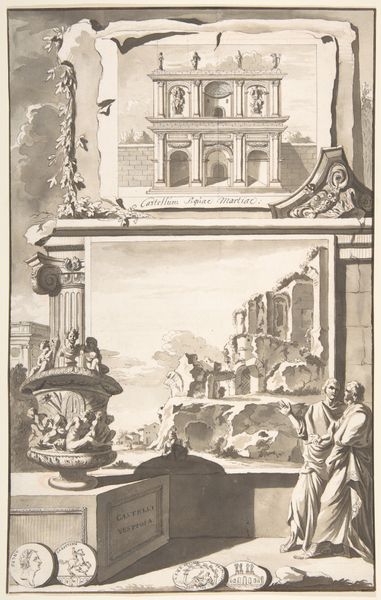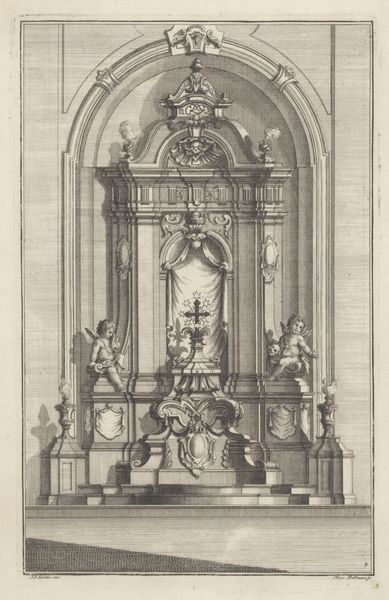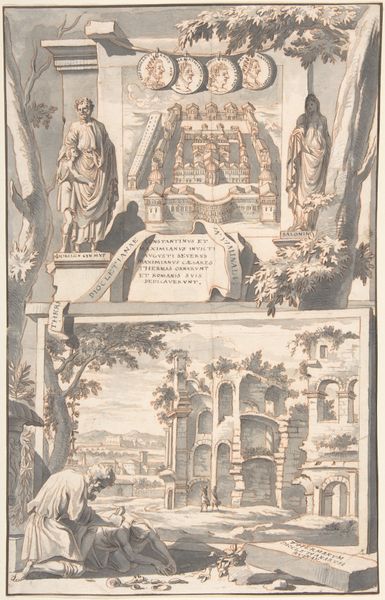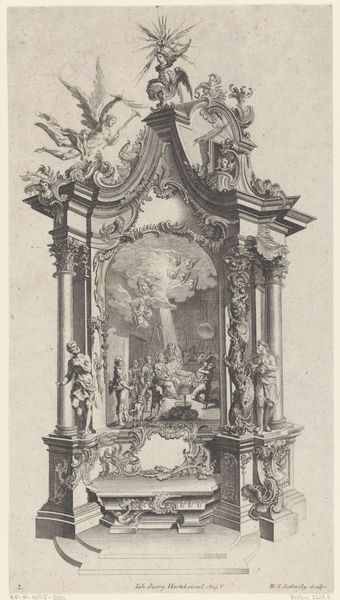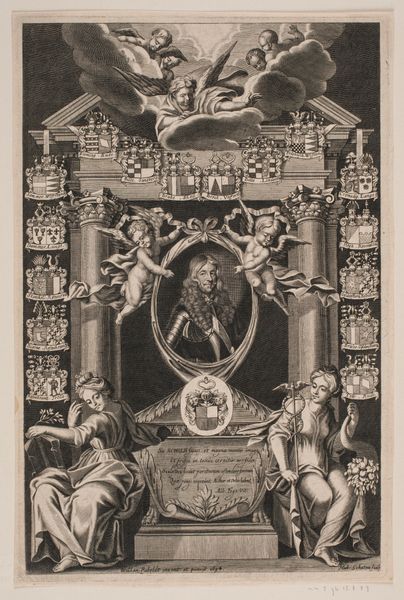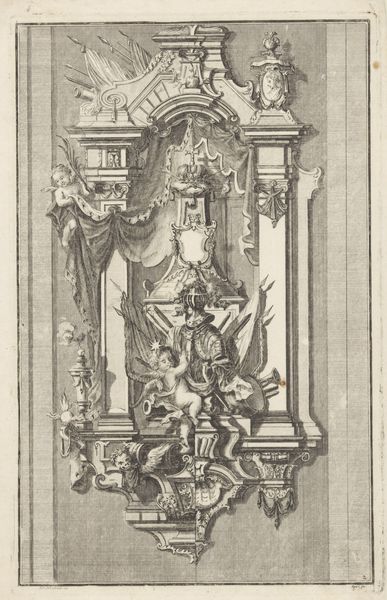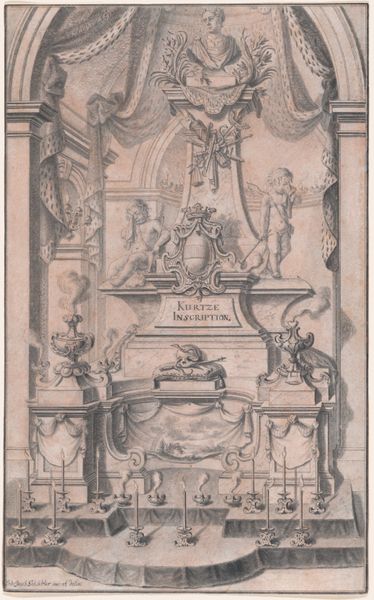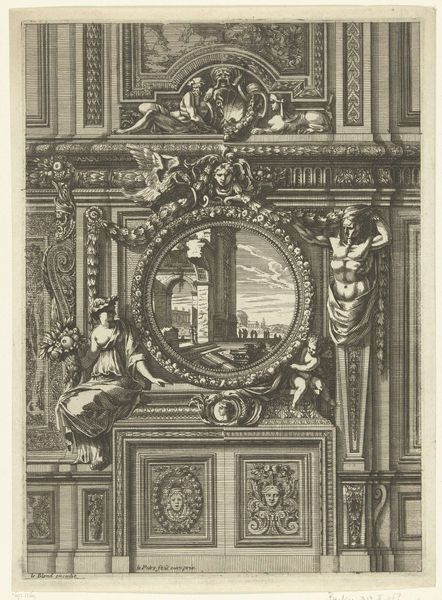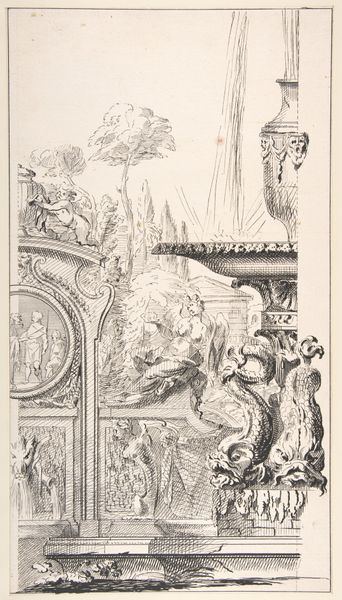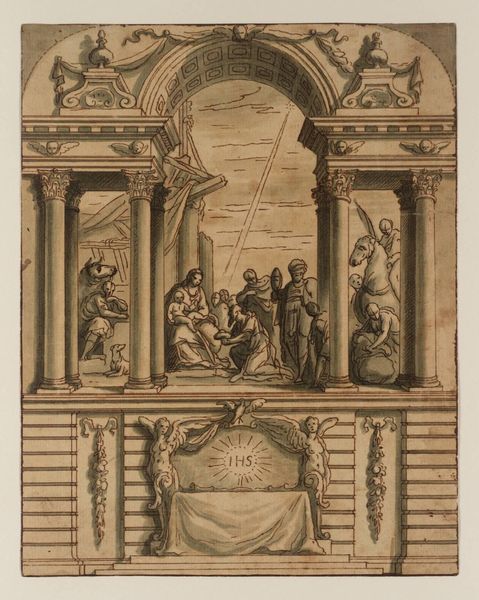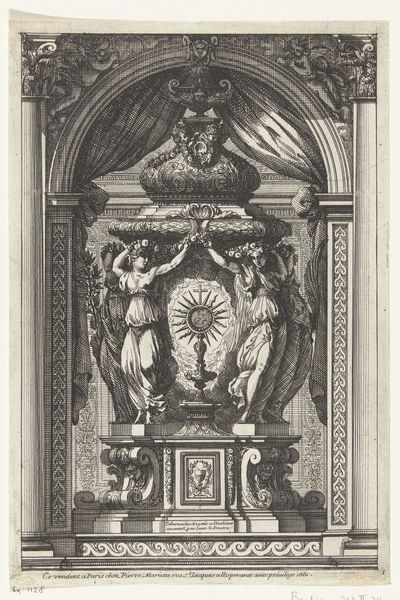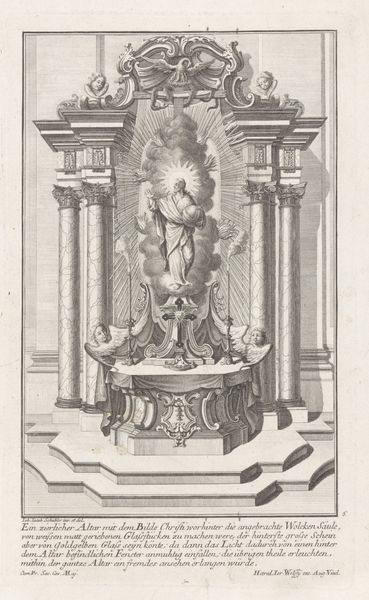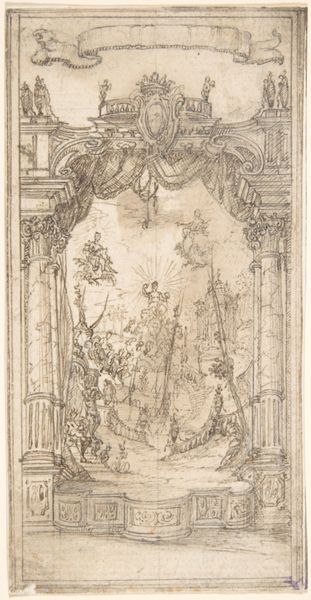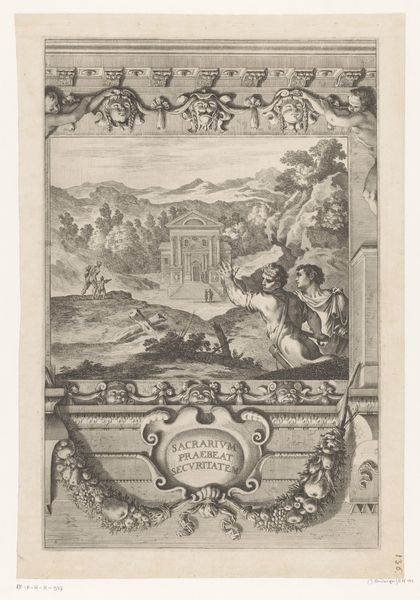
Ruins of the Forum of Nerva (above) and Another View of the Ruins (below) 1690 - 1704
0:00
0:00
Dimensions: 13 1/8 x 8 7/64 in. (33.3 x 20.6 cm)
Copyright: Public Domain
Editor: This is Jan Goeree’s “Ruins of the Forum of Nerva (above) and Another View of the Ruins (below)”, dating from around 1690 to 1704. It's a drawing and etching showing two views of Roman ruins, composed one above the other. I am struck by how the artist frames each view with these ornate, almost theatrical borders. How do you interpret this framing, particularly in the context of ruins? Curator: The framing is indeed crucial. It's not just about documenting the ruins; it's about staging them, historicizing them in a very particular way for Goeree's 17th-century audience. Consider how the artist uses elements such as sphinxes, medallions with imperial profiles, and inscriptions. These function almost as cultural gatekeepers. The architecture becomes spectacle but within the gaze of power structures, doesn't it? Editor: So, the ruins are being presented not as mere physical remnants, but as symbols of a powerful past, almost like trophies? Curator: Precisely. And who gets to define that past, who has access to it, becomes the central question. Notice the figures within the ruins themselves. Are they merely inhabitants of this space, or are they dwarfed by the scale of imperial ambition and history represented by what surrounds them? Are we meant to feel a sense of loss, of pride, or perhaps of the ever-present weight of history itself? Editor: I see what you mean. By showcasing these classical elements, it seems Goeree may also want to reference, if not replicate, similar dynamics that shape our understanding of cultural legacies even today. Curator: Exactly. How we interpret the 'ruins' of history – the power structures and biases embedded within our social narratives. That to me is the important legacy of works like Goeree's, asking us to critically examine the foundations of our present. Editor: It's interesting to consider it beyond its aesthetic value. I now have a better sense of its socio-historical framework. Curator: Indeed. And hopefully, a critical approach. Keep questioning, keep digging beneath the surface, that is where true understanding resides.
Comments
No comments
Be the first to comment and join the conversation on the ultimate creative platform.
